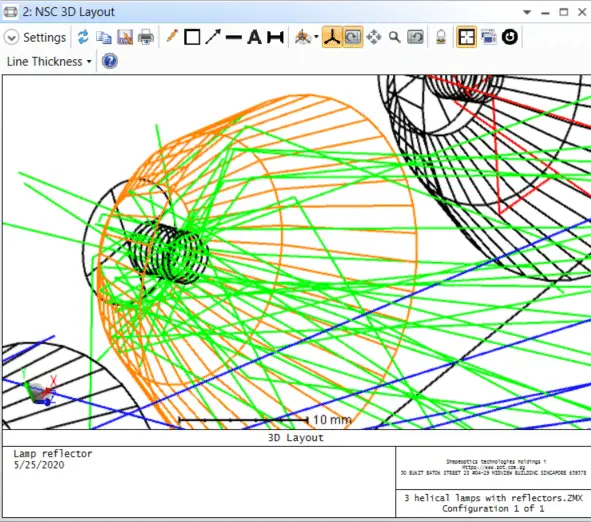This article will introduce you to Non-Sequential optical design and the advantages of Non-Sequential Mode and mixed mode.
Non-sequential ray tracing allows rays to propagate through optical components in any order and allows rays to be split, scattered, and reflected back to an object that they’ve already encountered.
What is non-sequential ray tracing?
Rays from non-sequential sources, known as NSC rays, can be split and scattered by optical components. These rays can also be diffracted at phase surfaces/objects. The analysis options available when tracing NSC rays include evaluating radiometric data on detectors and the storing of ray data in ray database files. Detectors can be modeled as planar surfaces, curved surfaces and even three-dimensional volumes.
Polygon Object Modeling
Polygon Objects. Prisms and faceted objects can also be imported as STL files, a file format exported by many CAD programs.


Source Modeling
Zoom in on one of the lamps in the NSC 3D Layout window and you will then see the helical structure of the sources being modeled. In this example, each lamp is simulated using the Source Filament object type which is a coiled helix.

Complex geometry creation


Ray splitting and scattering
This example shows a simple BEF modelled by a POB object. Note that simple splitting
is approximately 6 times faster than full splitting in this case

While diffractive optical elements can be modeled in both Sequential and Non-Sequential Mode, Non-Sequential Mode’s ray splitting capabilities can be quite advantageous for diffractive modeling.

In this example, rays are diffracted into mutiple orders (from -2 to +2) from the grating. Diffraction occurs into all orders in both in transmission and reflection.
Coherence modelling

A small tilt angle between the two sources causes interference. Observe the coherent irradiance at several distances from the source. As the propagation length approaches the coherence length, the interference fringes wash out.
Absorption analysis
This example demonstrates the use of the Detector Volume object in a simple laser flash pump model. The cavity is modeled using one toroidal mirror at each end (objects 3 and 4). Near each mirror is a Source Tube emitting rays (objects 1 and 2). In the middle of the cavity is a Cylinder Volume object (object 6) which simulates a laser crystal.


Reference Source:
- https://www.zemax.com/
- Zemax Optical Design Program User’s Guide, Zemax Development Corporation
